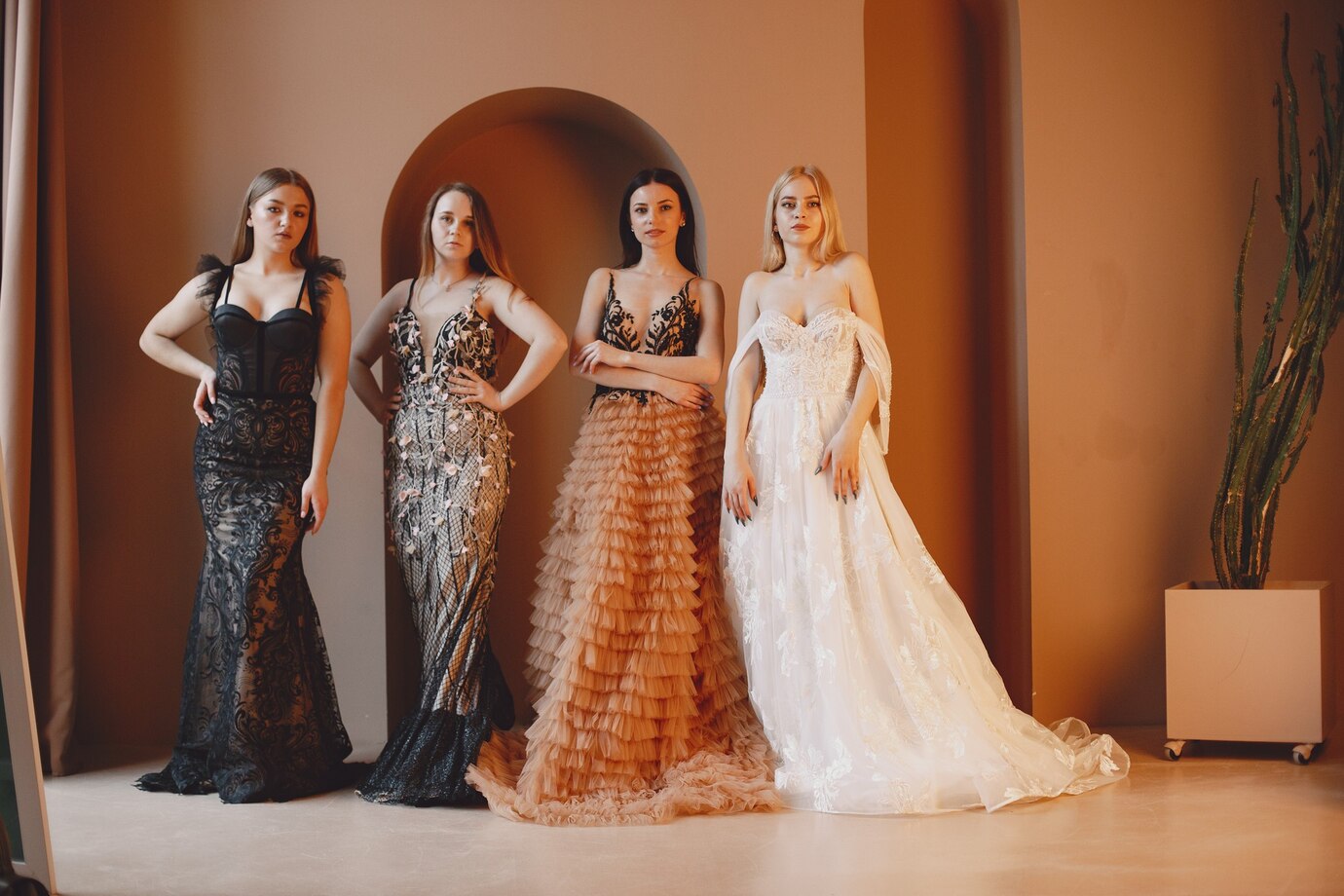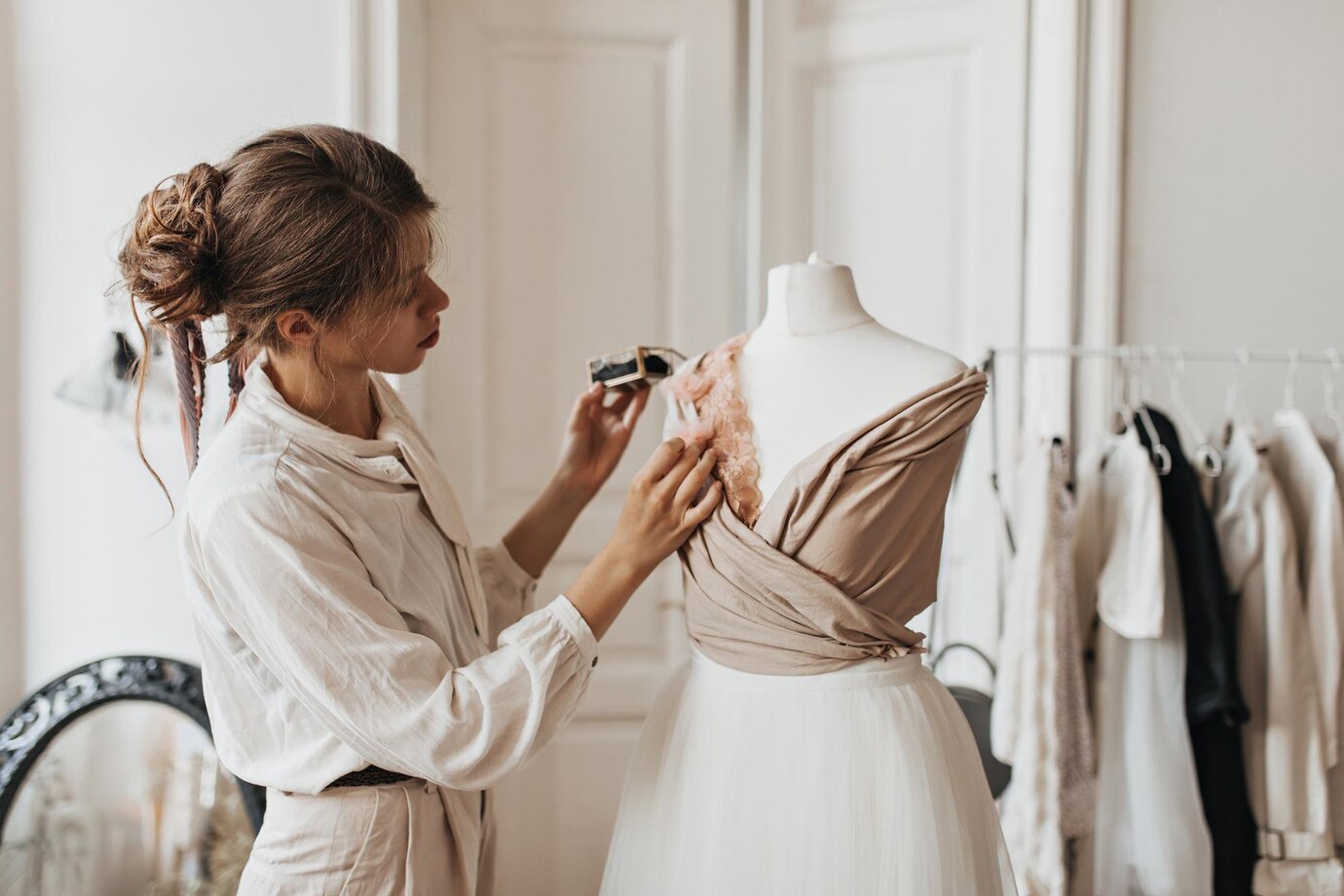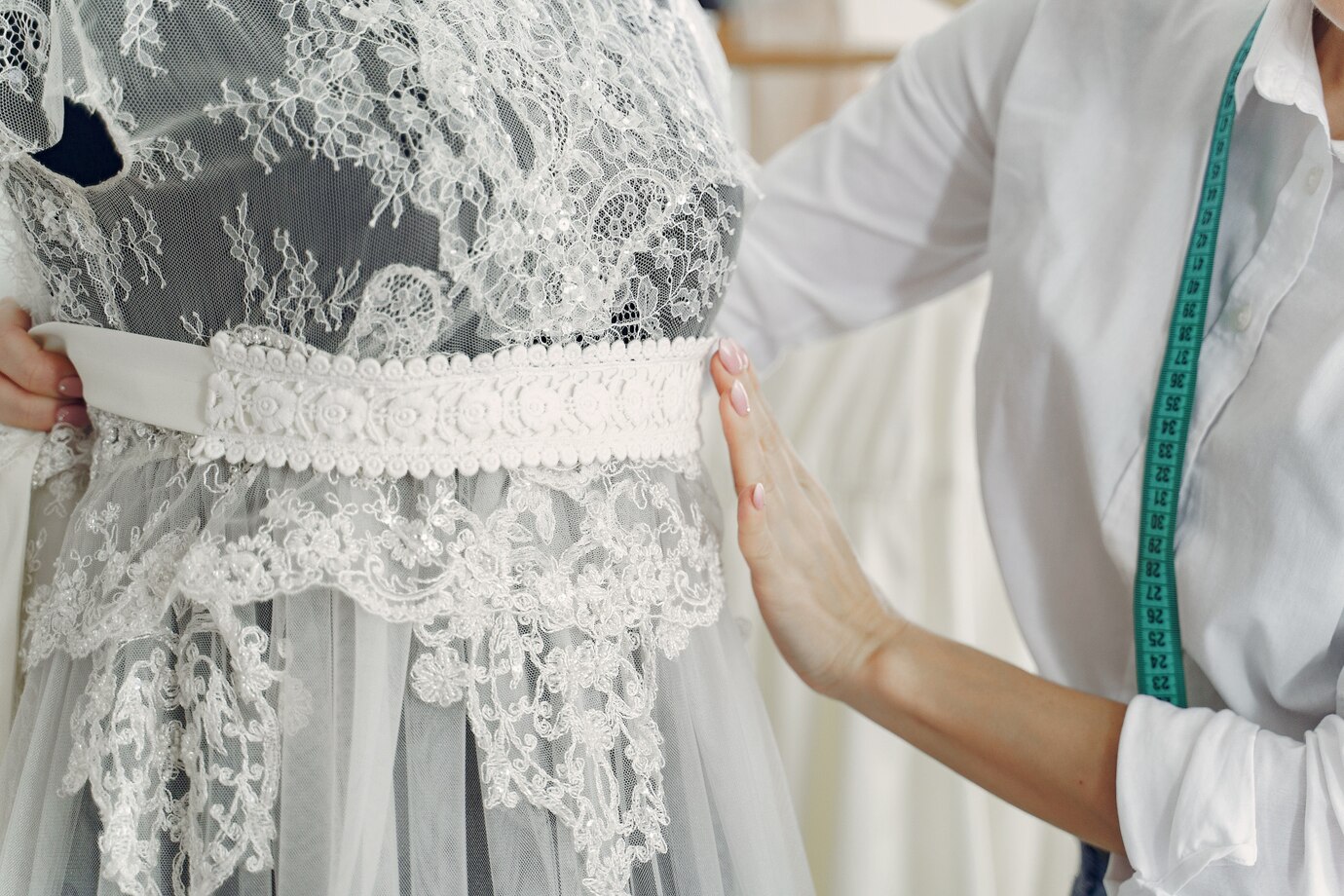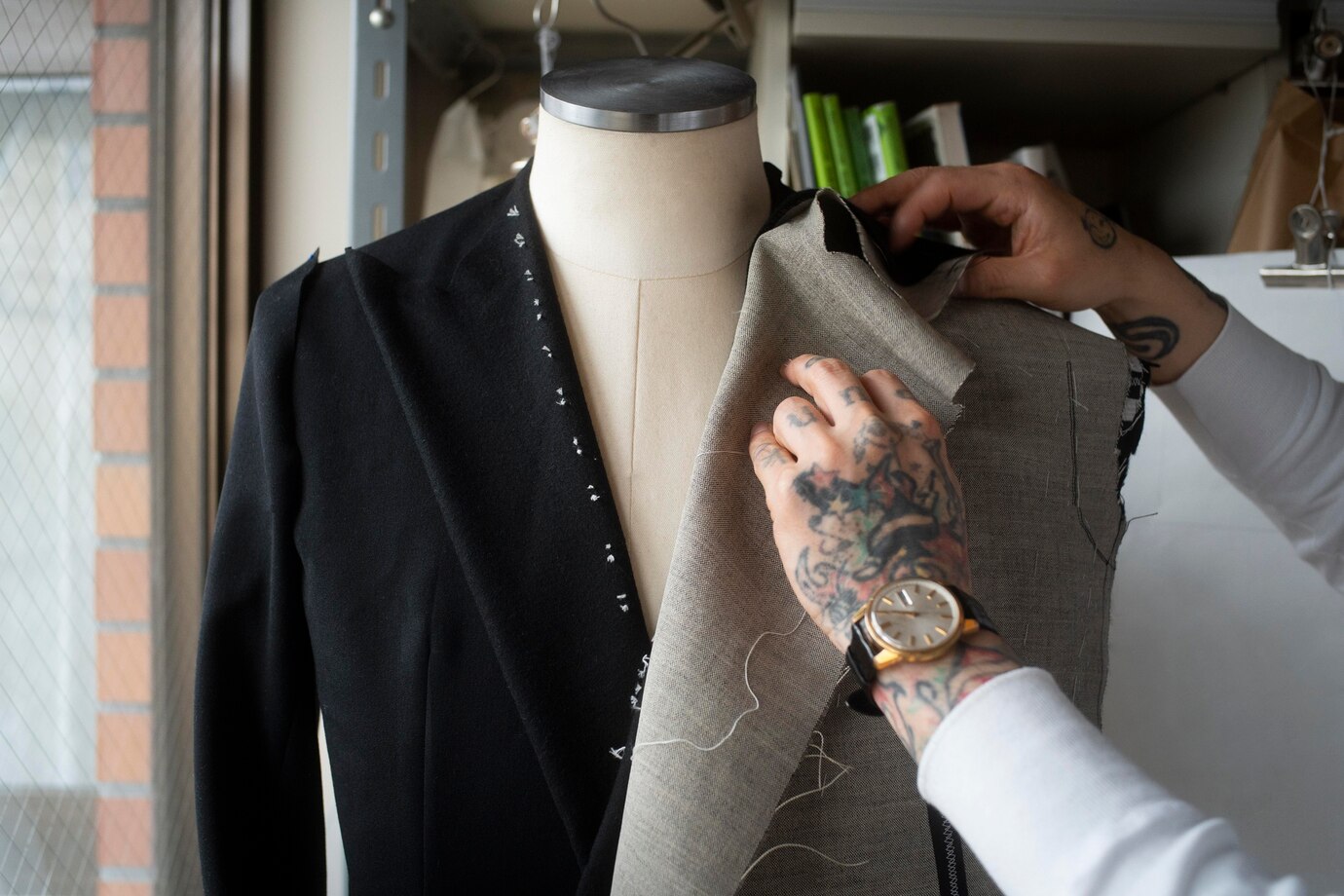The Evolution of Haute Couture & High Fashion
Couture and high fashion are the highest luxury, craftsmanship, and exclusivity standards. From the elaborate salons of 19th-century Paris to today’s digitally charged runway spectacles, haute couture history has had an outsized impact on what the fashion industry looks like. But how did it all begin? And how has high fashion changed to remain relevant

Couture and high fashion are the highest luxury, craftsmanship, and exclusivity standards. From the elaborate salons of 19th-century Paris to today’s digitally charged runway spectacles, haute couture history has had an outsized impact on what the fashion industry looks like. But how did it all begin? And how has high fashion changed to remain relevant in the contemporary landscape?
This history of haute couture dives deep into its roots as the rise of high fashion labels and the evolution of couture has shifted from a market craft to a global cultural phenomenon.
The Origins of Haute Couture

The Birth of Couture in 19th-Century France
The words “haute couture” (literally “high sewing”) come from Paris, the reigning fashion capital of the world. Haute couture, as we understand it today, began in the mid-19th century — but bespoke tailoring had existed for centuries already, thanks to one visionary designer: Charles Frederick Worth.
An Englishman based in France, Worth completely transformed the fashion world when he opened the first official couture house in Paris in 1858.
Unlike previous dressmakers, who took dictation from their clients, Worth dictated trends and presented seasonal collections. His creations were made by hand to fit each client. They used the best materials, carefully stitched by hand. This method is still key to haute couture today. The Role of the Chambre Syndicale de la Haute Couture To protect the artistry and exclusivity of couture, the Chambre Syndicale de la Haute Couture was established in 1868. This ruling body established strict rules as to what could be considered haute.
The Role of the Chambre Syndicale de la Haute Couture
To protect the artistry and exclusivity of couture, the Chambre Syndicale de la Haute Couture was founded in 1868. This governing body established strict rules for what qualifies as haute couture, including:
- Custom-made garments with multiple fittings
- Handcrafted designs created in an atelier (workshop) with skilled artisans
- A minimum number of pieces per seasonal collection
- An invitation-only clientele
Today, only a few fashion houses, such as Chanel, Dior, and Givenchy, hold the official haute couture label. The Chambre Syndicale keeps haute couture a respected and controlled field. It protects its artistic value.
The Golden Age of Haute Couture (1900s–1950s)

The Influence of Early Couture Designers
The early 20th century saw the rise of legendary designers who defined haute couture:
Paul Poiret (1910s)
Poiret introduced draped garments and bright colours, marking a shift from the stiff corsets of the Victorian era. He was the first designer to brand himself, creating a personal image alongside his fashion empire.
Coco Chanel (1920s)
Changed fashion with stylish and practical designs. She created the famous little black dress and tweed suits. Chanel’s philosophy of effortless elegance laid the foundation for modern women’s fashion.
Madeleine Vionnet (1930s)
She pioneered the bias cut, which created fluid, body-skimming shapes and enhanced natural movement and comfort.
Christian Dior (1947)
Introduced the “New Look.” It had nipped-in waists and full skirts. This style brought back luxury after WWII. Dior’s take on femininity and luxury brought Paris back as the world’s fashion hub.
In this golden age, haute couture thrived. Parisian salons made unique pieces for royalty, Hollywood stars, and the social elite.
The Rise of Ready-to-Wear & the Decline of Couture (1960s–1980s)
The Shift from Couture to Ready-to-Wear
By the 1960s, societal and economic changes led to haute couture’s decline. Several factors contributed:
The Youth Revolution
A new generation preferred casual, accessible fashion over formal gowns. The 1960s brought mini skirts, modern fashion, and bold prints. Designers like Mary Quant and André Courrèges led this trend.
The Rise of Ready-to-Wear (Prêt-à-Porter)
Designers such as Yves Saint Laurent helped make luxury ready-to-wear a trend. His Rive Gauche line marked the shift from couture to off-the-rack fashion.
Mass Production & Department Stores
Global retail growth decreased the demand for custom garments, and mass-produced fashion became cheaper and more available.
Changing Lifestyles
Women wanted practical, wearable fashion instead of extravagant pieces. Diane von Fürstenberg’s wrap dress symbolised the independent working woman in the 1970s.
Though haute couture houses faced challenges, they adapted. They launched ready-to-wear lines and added accessories, perfumes, and beauty products to stay relevant.
The Reinvention of Haute Couture (1990s–Present)
The Revival of High Fashion Brands
Haute couture, once in decline, made a strong comeback in the late 20th and early 21st centuries. This revival had several key drivers:
- Creative Directors Modernising Couture – Designers like John Galliano (Dior), Alexander McQueen (Givenchy), and Karl Lagerfeld (Chanel) added drama and new ideas to couture shows.
- Globalisation & Emerging Markets – Growing wealth in countries like China, Russia, and the Middle East increased demand for couture. Exclusive brands reached out to wealthy clients worldwide.
- Celebrity Culture & Red Carpet Influence – Hollywood stars and influencers raised couture’s profile at significant events, making unique pieces desirable.
- Luxury Group Investments – Fashion giants like LVMH and Kering bought couture houses, securing their future and success.
The Role of Technology & Digital Fashion
The digital age has transformed haute couture history in numerous ways:
- 3D Printing & AI Design – Designers now use technology to craft detailed, futuristic styles, stretching the limits of couture.
- Virtual Runway Shows—Couture collections are available online, allowing high-fashion brands to reach more people, not just the elite.
- Sustainable Fashion Innovations – Many couture brands adopt green practices, use ethical materials, and minimise waste.
- NFT Fashion & The Metaverse – Digital couture and virtual collections are growing trends, offering new ways to experience luxury.
The Lasting Legacy of Haute Couture
Haute couture, despite being exclusive, still shapes the wider fashion world. Today, it showcases craftsmanship, creativity, and brand identity. As luxury fashion changes, haute couture stays at the core of high fashion. It sets trends and inspires countless designers.
Why Haute Couture Still Matters
- A Symbol of Artistry: Couture shows the best craftsmanship and innovation in fashion.
- A Laboratory for Experimentation: Trends from couture often flow into ready-to-wear lines.
- A Reflection of Cultural Shifts: Haute couture mirrors cultural changes, from feminist ideas to tech advancements.
- A Testament to Timeless Luxury: While styles evolve, haute couture’s essence—exclusivity, precision, and beauty—stays the same.
Looking Ahead: The Future of Haute Couture

Haute couture has gone from a niche industry making clothes for aristocrats to a global shorthand for luxury and innovation. The future of couture looks bright as the fashion world increasingly fuses traditional with digitally innovative elements. Regarding sustainability, digital innovation, or emerging creative talents, haute couture will remain as glamorous as ever and show that true creativity will never grow old.
As high-fashion brands diversify their reach and embrace the evolution of couture, one thing remains clear: the domain of haute couture will always exude the pinnacle of fashion excellence.